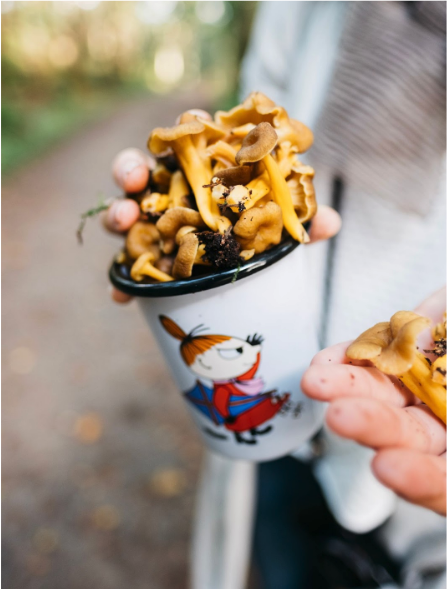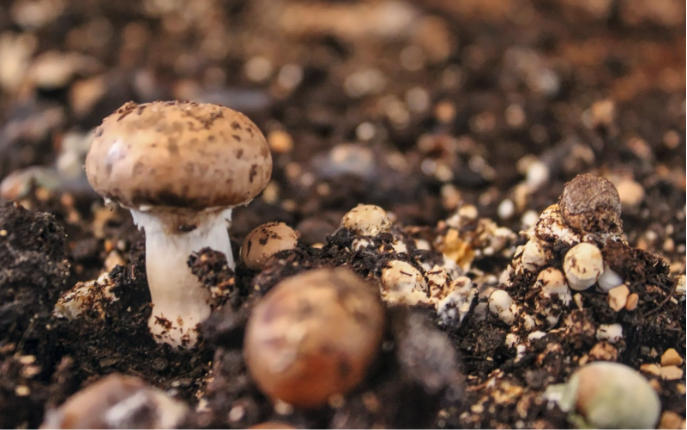Mushrooms are a unique and tasty addition to any meal, and growing them is not only a fun hobby, but also a way to ensure a steady supply of fresh mushrooms. While many people opt to grow standard edible mushrooms such as button mushrooms, portobellos, and shiitakes, growing wild mushrooms can be a fun and rewarding challenge. In this article, we will provide you with a step-by-step guide on how to grow wild mushrooms.

Before you start to grow wild mushrooms, it is important to do your research. There are many different types of wild mushrooms, and not all of them are safe for consumption. Some wild mushrooms are highly poisonous and can be fatal if ingested. Therefore, it is important to be familiar with the types of wild mushrooms that are safe to eat.
Some popular edible wild mushrooms include morels, chanterelles, and porcini. However, there are many other types of wild mushrooms that are also safe to eat. A good place to start is by consulting a field guide on how to grow wild mushrooms or attending a foraging class to learn about the different types of wild mushrooms in your area.

Once you have decided which type of wild mushroom you want to grow, you need to choose a growing medium. Wild mushrooms typically grow in soil, but they can also grow on decaying organic matter such as wood chips, sawdust, or straw.
For example, if you want to grow morels, you will need to use a growing medium that is high in nitrogen, such as compost or manure. Morels typically grow in the spring and require a moist environment, so you will need to make sure the growing medium is kept moist and warm.
Chanterelles, on the other hand, typically grow in the fall and require a slightly acidic environment. They can be grown on a substrate of hardwood sawdust, mixed with bran or other nitrogen sources.
Porcini can be grown on a mixture of hardwood sawdust and wheat bran, with a touch of gypsum for texture.
Once you have chosen a growing medium, the next step is to inoculate it with mushroom spawn. Mushroom spawn is essentially mushroom spores that have been grown on a nutrient-rich substrate. You can buy mushroom spawn online or from a local nursery.
To inoculate your growing medium, simply mix the spawn into the substrate and keep it moist and warm. The spawn will eventually grow into a network of mycelium, which will then produce mushrooms.
Wild mushrooms require specific conditions to grow, so it is important to provide the right environment. Generally speaking, wild mushrooms prefer a warm, humid environment with good air circulation.
To create the right conditions, you can place your growing medium in a greenhouse, or in a warm, humid location in your home. If you are growing mushrooms on sawdust or straw, you can cover the growing medium with plastic to help retain moisture.
Once your mushrooms have matured, it is time to harvest them. This can be done by gently pulling the mushroom cap away from the stem, or by cutting the stem at the base with a sharp knife.
It is important to harvest mushrooms at the right time, as they can quickly become overripe and lose their flavor. Generally, wild mushrooms are ready to harvest when the caps are fully formed and the edges begin to curl under.
After you have harvested your mushrooms, it is important to store them properly. Wild mushrooms can be stored in the refrigerator for up to a week, or they can be dried or frozen for long-term storage.
When storing wild mushrooms in the refrigerator, it is best to wrap them in a damp paper towel and place them in a paper bag. This will help to prevent them from drying out too quickly. However, it is important to use your mushrooms as soon as possible, as they will continue to lose flavor and nutritional value over time.
If you want to preserve your mushrooms for longer periods of time, you can dry them or freeze them. To dry mushrooms, simply spread them out on a baking sheet and place them in a warm, dry location. They will slowly dehydrate over time, and can be stored in an airtight container for up to a year.
Freezing mushrooms is another option for long-term storage. To freeze mushrooms, simply clean and chop them into bite-sized pieces, and place them in an airtight container or freezer bag. They can be frozen for up to six months.
While learning how to grow wild mushrooms can be a fun and rewarding experience, there are some important tips to keep in mind to ensure success.
First and foremost, it is important to be patient. Wild mushrooms can take several weeks or even months to mature, so it is important to be patient and wait for them to grow.
Secondly, it is important to maintain the right growing conditions. This means keeping the growing medium moist and warm, and providing good air circulation.
It is also important to keep your growing area clean and free of pests. Insects and rodents can quickly destroy a mushroom crop, so it is important to keep your growing area clean and free of any potential pests.
Finally, it is important to be safe when foraging for wild mushrooms. While there are many delicious and safe wild mushrooms, there are also many poisonous mushrooms that can be deadly if ingested. Always consult a field guide or an expert before consuming any wild mushrooms and to help learn how to grow wild mushrooms.